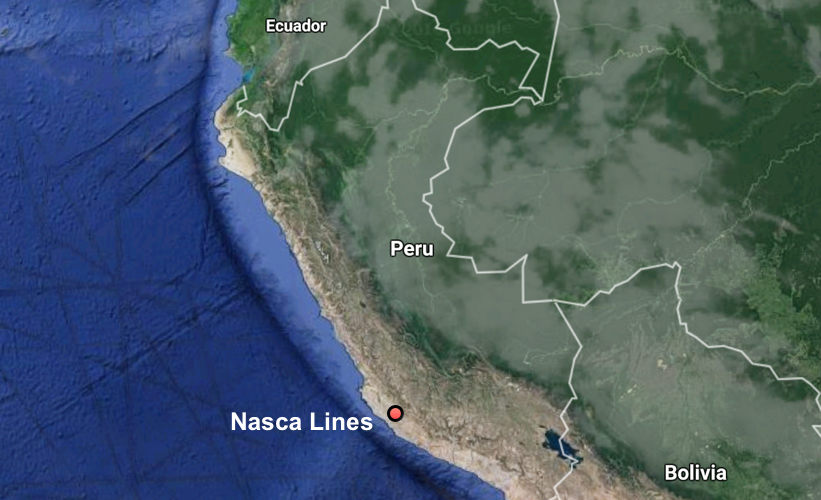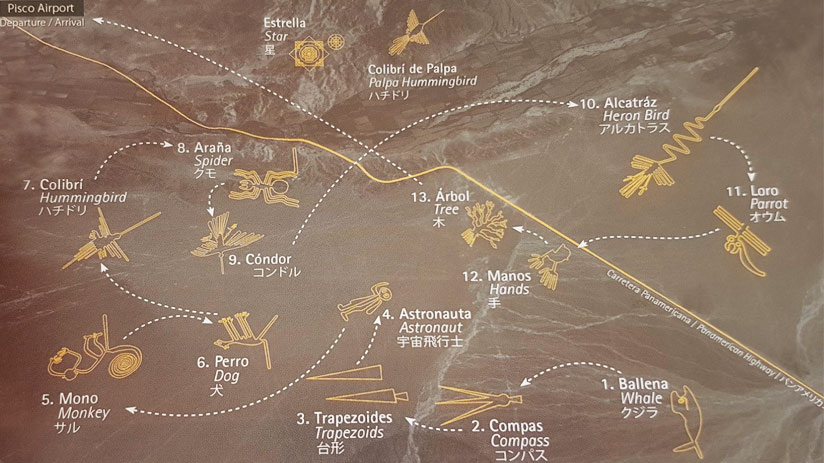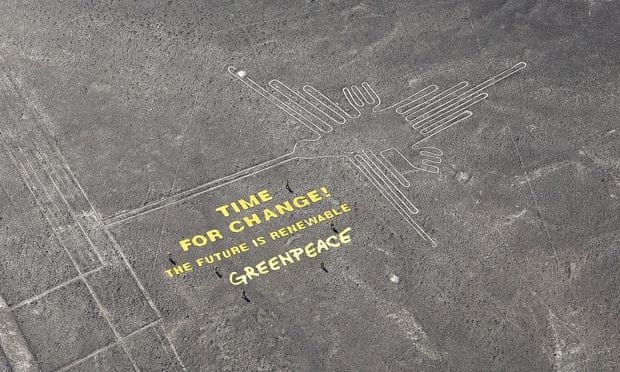Nazca Lines: Peru's Ancient Mystery Explained

Introduction to Nazca Lines in Peru
Overview of the Nazca Lines
Welcome to the fascinating world of the Nazca Lines in Peru! The Nazca Lines are a series of ancient geoglyphs that are etched into the desert floor in southern Peru. These enormous designs can only be fully appreciated when seen from above, showcasing various figures such as animals, plants, and geometric shapes. The precision and scale of these creations without the aid of modern technology leave visitors in awe.
Historical significance and mystery behind the Nazca Lines
Curious about the history and mystery surrounding these remarkable geoglyphs? The Nazca Lines are believed to have been created by the ancient Nazca culture between 500 BCE and 500 CE. Although there are several theories, the exact purpose of these lines remains unclear. Some suggest they had ceremonial significance or astronomical alignment purposes. However, their true meaning continues to puzzle researchers and explorers alike, adding an air of mystique to these incredible creations.
So, get ready to dive into the captivating world of the Nazca Lines, where history meets intrigue!

Location and Size of the Nazca Lines
Geographical location of the Nazca Lines in Peru
When you step into the vast desert plains of southern Peru, you'll encounter a mesmerizing sight known as the Nazca Lines. These ancient geoglyphs are scattered across the arid landscape, waiting to be explored and admired by curious travellers like yourself. Located in the Nazca Desert, these mysterious creations hold a special place in history, offering a glimpse into the ancient civilization that once thrived in this region.
Dimensions and scale of the Nazca Line figures
As you gaze upon the intricate designs etched into the desert floor, you'll be amazed by the sheer size and scale of the Nazca Lines. Spanning several kilometres, these geoglyphs feature various figures such as hummingbirds, monkeys, and geometric shapes that come to life when viewed from above. The precision and detail put into creating these massive drawings centuries ago are truly remarkable, showcasing the artistic skill and ingenuity of the ancient Nazca culture.
So, as you prepare to embark on a journey to witness the mystical Nazca Lines up close, be prepared to be inspired by their grandeur and complexity. With each figure telling a story of its own, you'll find yourself captivated by the enigmatic beauty that continues to intrigue historians and visitors alike. Get ready to immerse yourself in a world where ancient artistry meets natural wonders, waiting to leave you in awe at every turn.

UNESCO World Heritage Site Designation
Recognition of the Nazca Lines as a UNESCO World Heritage Site
When you think about the significance of the Nazca Lines, it's no surprise that they have been designated as a UNESCO World Heritage Site. This prestigious recognition highlights the importance of preserving and protecting these incredible ancient geoglyphs for future generations to appreciate and marvel at. The intricate designs and mysterious history of the Nazca Lines make them a truly unique cultural treasure that deserves to be celebrated on a global scale.
Efforts for preservation and conservation of the Nazca Lines
As you stand amidst the awe-inspiring Nazca Lines, you'll witness ongoing efforts to preserve and conserve these remarkable creations. Dedicated teams work tirelessly to ensure that these delicate geoglyphs are safeguarded against natural elements and human interference. Through careful monitoring and strategic conservation projects, steps are being taken to ensure that the Nazca Lines endure for centuries to come, allowing visitors like yourself to continue experiencing their enchanting beauty firsthand.
So, as you explore the enchanting world of the Nazca Lines, take a moment to appreciate the collective efforts made to protect these ancient wonders. By joining in this journey of preservation, you become part of a legacy that aims to safeguard these extraordinary geoglyphs for future admirers to cherish and marvel at.

Purpose and Interpretation of the Nazca Lines
Theories on the purpose and creation of the Nazca Lines
As you immerse yourself in the mystical aura of the Nazca Lines, various theories surround their purpose and creation. Some believe they served as astronomical calendars or ritualistic pathways, while others speculate they were symbols communicating with ancient deities. The mystery shrouding their origin adds a sense of wonder to your exploration, inviting you to ponder the intentions behind these captivating geoglyphs.
Significance of the different geoglyphs and figures
While traversing the arid landscape etched with enigmatic shapes, each geoglyph and figure unveils a piece of history waiting to be deciphered. From geometric patterns to depictions of animals and plants, every symbol holds significance in unravelling the cultural tapestry of the Nazca civilization. As you gaze upon these intricate designs from above, a sense of connection to an ancient world fills your heart, sparking curiosity about the stories embedded within each unique creation.
Famous Geoglyphs at Nazca
Overview of the iconic geoglyphs at Nazca
As you explore the captivating landscapes of Nazca, you'll encounter a myriad of iconic geoglyphs that have fascinated experts and travellers alike for centuries. The vast array of intricate designs etched into the desert floor presents a visual feast, inviting you to delve into the rich history and culture of the ancient Nazca civilization. Each geoglyph holds a unique story waiting to be uncovered, adding layers of mystery and allure to your journey through this archaeological wonder.
Meaning and interpretations of some of the most famous figures
As your gaze sweeps over the enigmatic figures scattered across the Nazca desert, you can't help but marvel at the intricate details and sheer scale of these ancient artworks. From the famous hummingbird to the majestic spider, each figure carries significant symbolism that hints at the spiritual beliefs and cultural practices of the Nazca people. As you ponder the possible meanings behind these iconic geoglyphs, a sense of reverence washes over you, connecting you to a past where art and spirituality intertwined seamlessly in the arid landscape.
This immersive experience transports you back in time, offering glimpses into a world where creativity and reverence for nature converged to create enduring symbols that still captivate us today. With each step you take among these legendary figures, may you feel a sense of wonder and awe at the ingenuity of those who came before us.

Creator of the Nazca Lines
Hypotheses on the culture and people responsible for creating the Nazca Lines
As you stand amidst the sprawling desert of Nazca, pondering the ancient figures etched into the earth, you can't help but marvel at the mystery surrounding their creators. Scholars and archaeologists have put forth various hypotheses regarding the people behind these enigmatic geoglyphs. Some suggest that it was the Nazca civilization themselves who painstakingly designed these intricate figures, possibly as offerings to their deities or as celestial calendars. Others theorize that different groups within the region collaborated to create these massive artworks, each contributing unique symbols and meanings to the vast canvas of the desert floor.
Influence of Nazca culture and society on the geoglyphs
As you delve deeper into the symbolism portrayed by each geoglyph, a profound connection emerges between the artistry and beliefs of the ancient Nazca culture. The intricate depictions of animals, plants, and geometric shapes reflect not only a deep appreciation for nature but also a spiritual reverence that permeated every aspect of Nazca society. The alignment of these figures with celestial events further emphasizes their significance in religious ceremonies and agricultural practices. By exploring these iconic geoglyphs, you are embarking on a journey through time that unveils how art, spirituality, and daily life intertwine seamlessly in this vibrant civilization.

Aerial Viewing of the Nazca Lines
Methods of viewing the Nazca Lines from the air
When you embark on an aerial adventure to witness the enigmatic Nazca Lines, there are two primary methods through which you can experience these ancient wonders. The first and most popular way is by taking a small aircraft, such as a Cessna or a small plane specifically designed for sightseeing tours over the Nazca desert. These flights provide you with a bird's-eye view of the expansive geoglyphs, allowing you to appreciate their intricate details and vast scale. The second method involves opting for a helicopter tour, which offers a more personalized and flexible viewing experience, allowing you to hover over specific figures for a closer look.
Pros and cons of experiencing the Nazca Lines from above
As you soar above the Nazca desert, immersed in the beauty of these ancient creations, you will encounter both pros and cons of witnessing the Nazca Lines from an aerial perspective. One significant advantage is the unparalleled vantage point that flying provides, offering you a comprehensive view of numerous geoglyphs that are best appreciated from above. Additionally, the aerial viewpoint enables you to grasp the sheer magnitude and complexity of these symbols in a single glance. However, one potential downside to aerial viewing is the limited time frame allotted for each flight, which may constrain your ability to absorb every detail fully. Despite this, the awe-inspiring experience of witnessing these mysterious figures from the sky is sure to leave an indelible mark on anyone who undertakes this extraordinary journey.

Current Challenges and Threats to the Nazca Lines
Environmental and human-related threats to the preservation of the Nazca Lines
When you consider the ongoing preservation efforts for the Nazca Lines, it becomes apparent that various challenges threaten the longevity of these ancient wonders. Environmental factors, such as climate change and erosion caused by wind and rain, pose a significant risk to the delicate geoglyphs etched into the desert floor. Additionally, human-related threats, including illegal encroachment, land invasions, and unchecked tourism activities, further endanger the integrity of these historical symbols. The increasing urbanization and agricultural development in the surrounding areas also contribute to the potential deterioration of the Nazca Lines over time.
Measures taken to protect and safeguard the ancient site
To address these pressing concerns and ensure the conservation of the Nazca Lines for future generations, various protective measures have been implemented. Conservation initiatives focus on raising awareness about the significance of these cultural treasures and promoting sustainable tourism practices that minimize adverse impacts on the fragile desert environment. Furthermore, stricter regulations have been enforced to control access to designated viewing areas and restrict any activities that could harm or deface the geoglyphs. Collaborative efforts involving government agencies, local communities, and international organizations aim to monitor and safeguard this UNESCO World Heritage Site from encroaching threats while fostering appreciation for its historical value. Steps are being taken to preserve the enigmatic Nazca Lines as enduring testaments to ancient creativity and ingenuity by combining proactive conservation strategies with community engagement and responsible visitor behaviour.
